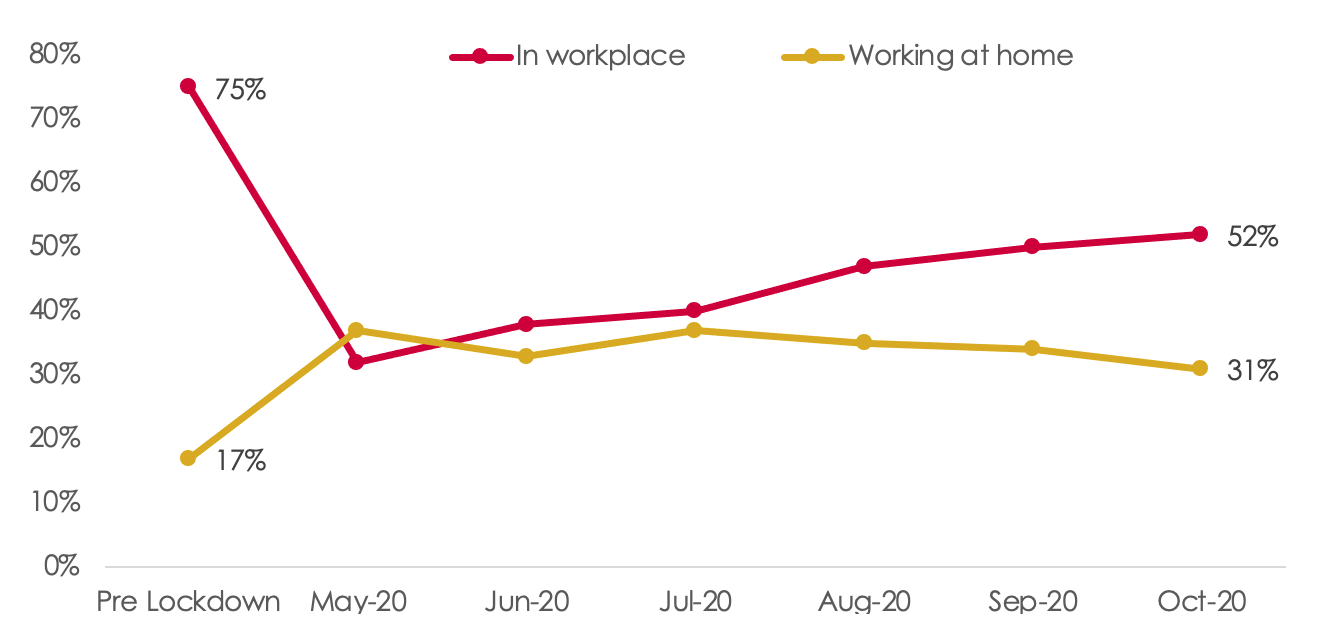By Tom Johnson of Trajectory Partnership.
The deregulation of life continues in 2020
Throughout 2020 pandemic-influenced changes have accelerated a long-term trend we call The Deregulation of Life (see here for a PDF report of ours from 2016). Put simply, this means that people have more control and freedom to choose what they do, when they do it and how they do.
We’re all living increasingly-busier lives…
Deregulation has been happening in different guises for decades. It’s often driven by legislation that allows certain activities to be done at different times – such as the Sunday trading laws of the 1990s, or the liberalisation of on-trade alcohol sales in the 2000s – or by social attitudes and behaviours evolving.
For example, men do a greater share of household chores, cooking and childcare than they did in the 1960s or 1970s. It’s still a long way from equitable, but some progress has been made.
Technology also plays a huge role. Only a couple of decades ago, we could only shop when the shops were open. Now it is a 24-hour activity – thanks to the internet, almost everything is now a 24-hour activity.
This year, the key transformation isn’t in when activities happen, but where.
As a result of social distancing more activities are taking place at home. During lockdowns, everything that can be done from home is. Rather than go to the gym we join an exercise class at home. Rather than go to the shops we order online. Instead of meeting friends and family at a café, pub, restaurant or bar, we Zoom them.
Many of these home-based activities are pale imitations of the real thing. Tech is a lifeline but we’d rather see our friends and family in the real world than on a video call. Our own work in this area has consistently found that people enjoy out of home leisure more than anything else, and the relative success of Eat Out To Help Out is evidence that with the right motivations even a pandemic won’t keep consumers away from leisure and hospitality.
But other things are better at home – and work is one of them. During the first lockdown, more people were working at home than in their place of work. The trend since then has been one of a gradual return to the workplace, but at no point did it completely revert to the pre-pandemic level.
UK Workers: Primary location
UK Workers Primary Location (Trajectory Optimism Index: May-Oct 2020)
Most workers enjoy the extra freedom and autonomy that comes from working at home and they have an extra few hours a week to spend how they wish, because they are not commuting.
It’s important not to exaggerate the shift to home working for two reasons, as we explored in this previous blog:
First, this is only relevant to a subset of the UK workforce. Many jobs, from teaching to retail to manufacturing to social care can’t be done at home.
Secondly, the office isn’t dead: for meetings, training and creative tasks, we’ll once again need a common space to collaborate. Instead, hybrid working will become more common, splitting the week between here and there.
But the bottom line is that more flexible working is here to stay.
This is so powerful because where we are when we work affects where we are when we’re not working: including where we live and where we spend the rest of our time.
It also poses some real challenges for employers, not least in terms of how you embed culture in a workforce without a shared location, and the best way to use a workplace when it isn’t the default home of all staff (see Jenni Field’s Remotely Interested report for more on this). But workers themselves will find they have more freedom and control over both their working lives and their wider lives as a result.
Along with working from home, we’re also better equipped to change the locations of other activities too, thanks to our experiences this year.
This is the next stage of the Deregulation of Life.
If you enjoyed this blog, check out these from Tom:
https://www.authenticcomms.co.uk/blog/going-back-to-work-ditching-the-office-is-not-the-new-normal-for-everyone
https://www.authenticcomms.co.uk/blog/what-next-tradeoffs-lots-of-tradeoffs
Tom Johnson is Managing Director of Trajectory, the leading trends and foresight consultancy. Tom and Trajectory use data and forecasting techniques to understand changing consumer behaviour and map out the future.




